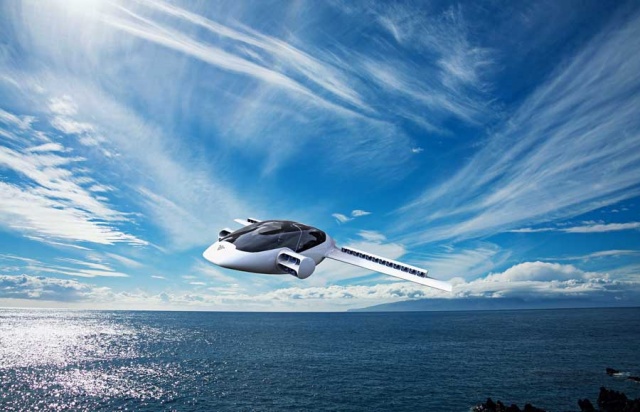With Airbus showing off concept video of its personalised flying car concept, the Vahana, it's tempting to think that the world has suddenly gone flying car mad. Could it be the proximity of a new Blade Runner film, the original of which did so much to popularise the idea of a flying and hovering car thanks to the future-gazing work of production designer Syd Mead?
That's unlikely to be Toyota's inspiration, but the Japanese giant is known to be at least partially keen on the flying car idea, having filed a US patent last year not for a fully-fledged flying car as such, but for concepts and engineering ideas that lead to one.
Now, though, Toyota is going a step further, investing a reputed €400,000 into a start-up flying car company whose aim is to have a personal flying machine ready in time to light the flame of the 2020 Tokyo Olympics.
Ambitious, and it's also a Toyota product in all but name. Toyota has invested the money in a firm called Cartivator, but that company is itself composed entirely of Toyota employees, working together on flying car concepts since 2012, using online crowdfunding. Speaking to Nikkei Asian Review, Toyota Chairman Takeshi Uchiyamada said "things will not progress if you wait and provide money only when the technology is ready."
Currently Carviator is a weekend and spare time project of this group of Toyota engineers, working out of an old school building in Aichi Prefecture, but they have already demonstrated a one-fifth scale model of the flying car making low-level prototype flights.
It comes at a time when interest, serious commercial interest, in flying cars is rapidly growing. While Airbus recently gave a commitment to developing its Vahana flying car (which is more of an autonomously controlled personal-sized helicopter), a German firm, Lilium Jet, has just test-flown a prototype of what it hopes will be a future electric hybrid of car and plane.
The prototype of the new craft is more of a small, personal-use Vertical Take Off/Landing (VTOL) aircraft than a car that flies, uses battery power and no fewer than 36 electric fans, which are attached to the craft's wings.
As with the famous Harrier jump-jet, these fans can tilt from a straight-down position, where they generate enough power for vertical lift, to straight behind, where they provide power for forward flight.
The craft has a theoretical range of 300km and a maximum speed of 300km/h, and Lilium claims that it could whisk you from the centre of Manhattan to JFK airport in less than five minutes (compared to more than an hour for the same journey in ground-bound traffic) or from London to Paris in an hour - a point-to-point benchmark often used by the original pioneers of air travel in the early 20th century.
Lilium claims that there are no concerns over the batteries simply running flat and the craft plummeting from the sky, because there is "sufficient power for continued flight and a safe landing in the unlikely event that part of the battery configuration fails" said a spokesperson, who continued: "seeing the Lilium Jet take to the sky and performing sophisticated manoeuvres with apparent ease is testament to the skill and perseverance of our amazing team. We have solved some of the toughest engineering challenges in aviation to get to this point. The successful test flight programme shows that our ground-breaking technical design works exactly as we envisioned. We can now turn our focus to designing a five-seater production aircraft."
Of course, that whole 'plummeting from the sky' thing is what represents the largest single barrier between now and the age of the flying car. The prospect of sending hundreds, thousands even, of untrained driver-pilots aloft is enough to spook even those potential early-adopters. So, they've decided they all want parachutes.
According to the University of Michigan's Sustainable Worldwide Transportation Program, which conducted a survey into just this issue, 63 per cent of those asked said that they're 'very concerned' about the prospect of flying car safety, while 80 per cent said that a parachute (for the whole machine, not the occupant) would be 'very important.'
Airbus, Toyota and Lilium aren't the only entrants into this suddenly-expanding potential market. Dutch company PAL-V displayed a full-scale mock-up of its proposed Liberty flying car at the recent Monaco Top Marques motor show. The Liberty is a cross between a car, helicopter and gyroplane, and the company's Chief Executive, Robert Dingemanse, said: "After years of hard work, beating the technical and qualification challenges, our team succeeded in creating an innovative flying car that complies with existing safety standards determined by regulatory bodies around the world. Later in 2017 we will start building a preproduction series followed by the manufacturing of the first PAL-V Libertys for our early 'pioneer' clients. Deliveries of road and air certificated models are scheduled by the end of 2018. This truly is a pivotal time in aviation and mobility history."






